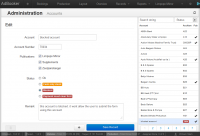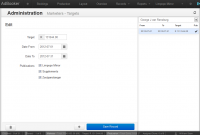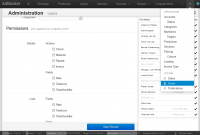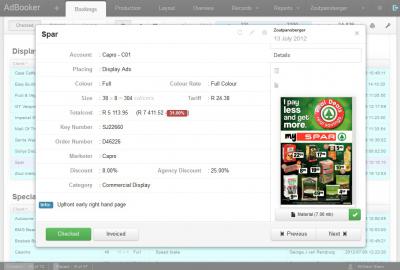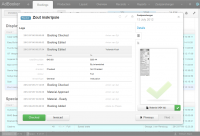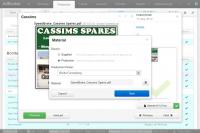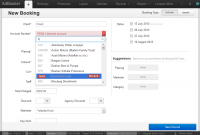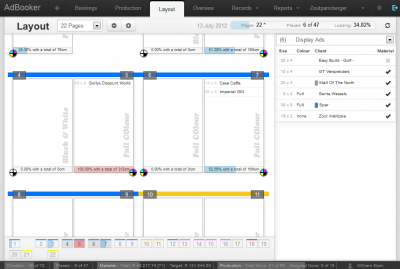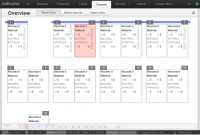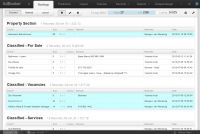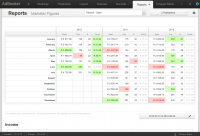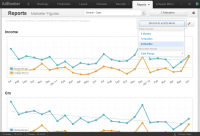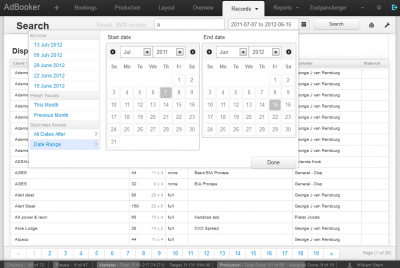What does it do
AdBooker controls and monitors the process from when a provisional booking is made up to the stage where it appears in the paper and the invoicing is done.
What is AdBooker
AdBooker is essentially a tool to facilitate the booking of advertising space and material file repository.
Finally
AdBooker is above all a management tool that provides immediate reports on anything from the ad loading percentage to the performance of individual marketers.
Features
Customizable Lists
AdBooker makes it easy to get the information you require at a glance. All the lists are highly customizable.
With over 50+ different columns available and 10+ different means to group the records each user can set up their work “environment” the way they need to be more productive.
Live stats are calculated keeping you informed of page loading, cm, how many pages the paper will be based on bookings
Never miss a booking in the paper again with our powerful record highlighting and filtering.


Details Pane
Complete details on the record is available with a single click on any record.
AdBooker makes it easy to spot mistakes with bookings before they start costing you money.
A live preview of the material is generated when the material (pdf) is uploaded. AdBooker also serves as a material repository/archive.
Based on permissions certain actions are made available to the user on the details pane like marking the record as checked, invoiced (and including the invoice number for easy filing), etc.
All changes are logged
All changes made within AdBooker are logged. Need to find out who changed that record from a 5 x 3 to a 10 x 2? Easy, click on the log tab within the details pane. Accountability has never been so easy before.
(AdBooker has an extensive permission section so only people that are permissible to perform actions will be allowed to do so)


Material Uploading and assigning
A record can be assigned to a certain production person at any time. That person will get a list to work from. This also tracks, in reports, how your production staff are managing and who your brightest star is.
Material uploaded will stay associated with the record no matter how far back you search.
Layout Planning
A Dummy view is generated of the publication. Records are simply dragged and dropped onto a page for planning purposes. This is further expanded to include the location on the page.
Page count is calculated based on your publication’s loading settings. AdBooker will automatically calculate the current amount of pages based on this loading but your layout person can overwrite the loading if needs be.
Each page can be locked to colour preferences, so for instance a colour advert cannot be added to a black and white page. Each page can be assigned a “section” which will make it easy to do the dummy.
When the layout person is happy, the page can be locked and no further editing of records will be allowed until the page is unlocked.


Archiving and searching
A client phoning in to enquire about their advert placed last year June? Fret not, simply head to the records section.
AdBooker makes it easy to find records quickly and efficiently.
All records are kept including deleted ones. Deleted records must contain a reason for the deletion as well.
Report Figures
We know that each month is different in a year, January is slower than say November but how did this years January perform vs say the last 4 years? AdBooker makes it easy, highlighting months that exceeded the average or performed poorly.
The records that make up each month are also available by simply clicking on the month in the reports section.
Reports like this are available for: Accounts, Marketers, Production, Categories, Placing, Sections and publication general. We also have Dedicated reports for discounts given (net vs gross price) as well as marketer targets.


Report Charts
Need to see how the paper, account, marketer, production, placing, section is performing over a time frame with a trend line? We got charts just for that.
If you have multiple publications you can group them and compare them to each other in the reports section.
